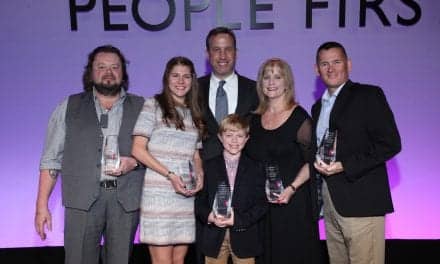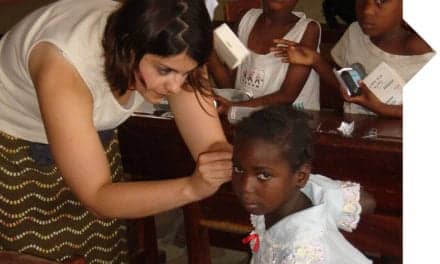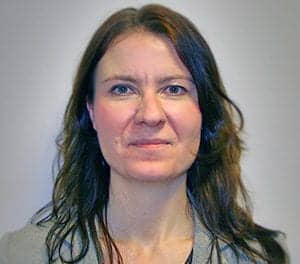The Ida Institute has announced the 10 finalists of its “Ideas, Speak up – Action and Awareness for Hearing Loss” campaign.
Ida and Oticon Foundation launched the initiative at AAA 2012 as a worldwide competition for ideas that have the potential to create public awareness of hearing loss, put hearing loss on the public agenda, and encourage people to take action.
More than 1,300 people contributed over 400 ideas. The 10 finalists chosen include “hearing loss-flavored ice cream,” sing-a-song cards that test hearing, and an international art awards program with traveling exhibition.
“The Ideas Campaign sparked the creativity and passion of people from around the world,” said Ida Institute managing director Lise Lotte Bundesen. “While the ideas generated are as unique and varied as the contributors, all focus on bringing hearing health and hearing loss into the mainstream of public awareness.”
Over the next few months, the Ida Institute will develop detailed implementation plans for the top 10 ideas that expand on their awareness-building potential. In late January, a VIP panel of judges, made up of thought leaders in a variety of hearing and health care, innovation, and communication disciplines, will select three winning ideas that will be celebrated at the 2013 AAA conference.
The VIP judging panel includes: Brenda Battat, executive director of the Hearing Loss Association of America; Tom Healy, writer, poet, and chairman of the Fulbright Foreign Scholarship Board; Bob Isherwood, former worldwide creative director of Saatchi & Saatchi advertising agency; Sergei Kochkin, PhD, former executive director of the Better Hearing Institute; and Helle Østergaard, executive director of the Crown Princess Mary Foundation.
Here are brief descriptions of the top 10 ideas submitted:
Hearing Loss-Flavored Ice Cream – Hearing loss doesn’t have to be presented in a negative context. Building on everyone’s love of ice cream, this idea suggests creating a unique hearing loss ice cream flavor to promote awareness, perhaps in partnership with a leading food manufacturer, such as Ben and Jerry’s.
Sing-A-Song Card – This inexpensive electronic card plays a tone ranging from silence to high-pitched noise. Users simply press a button on the card when they hear the tone being played. A red or green light indicates if the user has “heard correctly” or could benefit from a visit to a hearing care professional for a hearing check. Ideal for sponsorship by hearing health organizations or corporations, the reusable card can also be used to test family members or colleagues.
Eyes checked. Teeth checked. Hearing checked – In this idea, a mnemonic of three wise monkeys helps to establish routine hearing checks as part of the already recognized wellness routine that includes getting one’s eyes and teeth checked on a regular basis. This visual reminder suits a variety of mediums, including print and broadcast advertisements, websites, billboards, bus posters, and cinema trailers.
Deaf Statues – To raise awareness of hearing loss, this broad-based initiative would designate a day when prominent statutes and sculpture in parks, museums and other public space all wear hearing aids.
Hearing Environment Train – This concept train with individual cars simulating a variety of sound environments will travel to high-traffic locations, inviting people to step inside for an aural treat. Rather than focus on the negatives of hearing loss, the train will help people appreciate the way hearing enhances their quality of life.
Sounds of Art Prize: Art as a Medium for Change – This international competition challenges artists to interpret sound in a variety of mediums including painting, drawing, photography, sculpture and experiential multi-media, all to move and inspire individuals, communities, and societies. A traveling Sounds of Art Exhibition featuring the first prize winner and the 30 best entries will visit cities and countries and encourage the public to vote for a People’s Choice winner.
Monitor Your Risk Alert for iPods, Mobile Phones, and Other Listening Devices – This idea promotes hearing health with a built-in monitoring device on personal listening devices that alerts people when device volumes reach levels that have the potential to damage hearing. Easy-to-read and interpret green-yellow-red caution lights inform people as volumes approach an at-risk level. All mobile phones/iPods and similar devices would also include package inserts detailing the danger of loud sounds to hearing health.
Hairdressers as the First to Spot Hearing Loss – Hairdressers and barbers have a unique relationship with their clients and this idea would empower them to use that influence to address hearing loss. As they work, hair stylists often chat with their clients. In this interactive role, they are well placed to engage clients in conversations about the importance of protecting their hearing in everyday situations.
Educate Community and Raise Awareness Through Family Doctors – To promote hearing health and early hearing loss intervention, family doctors will be enlisted to routinely suggest a baseline hearing test for anyone aged 55 years or older. Physicians would write a prescription to encourage patients to follow through and audiologists would support the effort by conducting free hearing tests. This effort would be further supported with a series of awareness-building tools tailored for use by a variety of change agents including allied health care professionals, nursing homes, families, schools, speech pathologists, and audiologists.
Young Ambassadors for Hearing Health – This multi-professional activity motivates elementary, high school, undergraduate and graduate students to develop cooperative initiatives that promote hearing health and improve the quality of life in communities through academic-university tutoring. Under the guidance of college professors, graduate and undergraduate students work together, educating elementary and high school students regarding hearing healthcare, prevention and early diagnosis of hearing and communication disorders, auditory rehabilitation, and social inclusion of hearing impaired children.
Learn more about the 10 ideas and comment on them at http://www.awarenessforhearingloss.com.
SOURCE: The Ida Institute.




